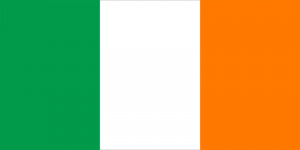Language/Irish/Grammar/Comparative-and-Superlative
Introduction
In this lesson, we will be learning about comparative and superlative adjectives in the Irish language. Adjectives are words that describe nouns, and by using comparatives and superlatives, we can compare and rank items based on their qualities. By the end of this lesson, you will be able to form comparatives and superlatives in Irish and use them in context.
Forming Comparatives
Comparatives are used to compare two items or qualities. In Irish, the comparative is formed by adding "-er" to the end of the adjective.
For example:
| Irish | Pronunciation | English |
|---|---|---|
| tanaí | TAH-nee | thin |
| tanaí-er | TAH-nee-er | thinner |
As you can see, the comparative form of "tanaí" (thin) is "tanaí-er" (thinner).
There are some exceptions to this rule. If the adjective ends in a vowel, you just need to add "-r" to the end of the adjective. If the adjective ends in a consonant followed by a vowel, you need to double the consonant and add "-er".
For example:
| Irish | Pronunciation | English |
|---|---|---|
| feargach | FER-gukh | angry |
| feargach-ris | FER-gukh-rish | angrier |
| deas | jass | nice |
| deas-r | jass-r | nicer |
Forming Superlatives
Superlatives are used to rank items or qualities against all other items or qualities. In Irish, the superlative is formed by adding "is" before the adjective.
For example:
| Irish | Pronunciation | English |
|---|---|---|
| feargach | FER-gukh | angry |
| is feargach | iss FER-gukh | angriest |
As you can see, the superlative form of "feargach" (angry) is "is feargach" (angriest).
There are also some exceptions to this rule. If the adjective ends in a vowel, you need to add "-a" before "is". If the adjective ends in a consonant followed by a vowel, you need to double the consonant and add "-a" before "is".
For example:
| Irish | Pronunciation | English |
|---|---|---|
| deas | jass | nice |
| is deasa | iss jass-a | nicest |
In some cases, you may come across adjectives that are irregular in their comparative and superlative forms. For example:
| Irish | Pronunciation | English |
|---|---|---|
| maith | mah | good |
| fearr | fahr | better |
| is fearr | iss fahr | best |
As you can see, "maith" (good) has an irregular comparative form "fearr" (better) and an irregular superlative form "is fearr" (best).
It's important to note that when forming the comparative and superlative forms of adjectives, you need to take into account the gender and number of the noun that the adjective is describing.
Examples
Now that we know how to form comparatives and superlatives, let's look at some examples in context:
- "An bó is sine sa tír" - The oldest cow in the country (superlative form of "sean" (old))
- "An carr is mó san áit" - The biggest car in the place (superlative form of "mór" (big))
- "An madra is gaire sa teach" - The happiest dog in the house (superlative form of "gáireach" (happy))
Conclusion
In this lesson, we have learned how to form comparative and superlative adjectives in Irish. We have seen that it's important to consider the gender and number of the nouns that the adjectives are describing, and that there are some irregular adjectives to be aware of. By using comparatives and superlatives, we can effectively compare and rank items based on their qualities. Keep practicing and soon you'll be a pro!
Other Lessons
- Descriptive Adjectives
- Common Prepositions
- Irish Prepositional Pronouns
- Give your Opinion
- Conditional Mood
- Questions
- Question Words
- Answering Questions
- Prepositional Pronouns

